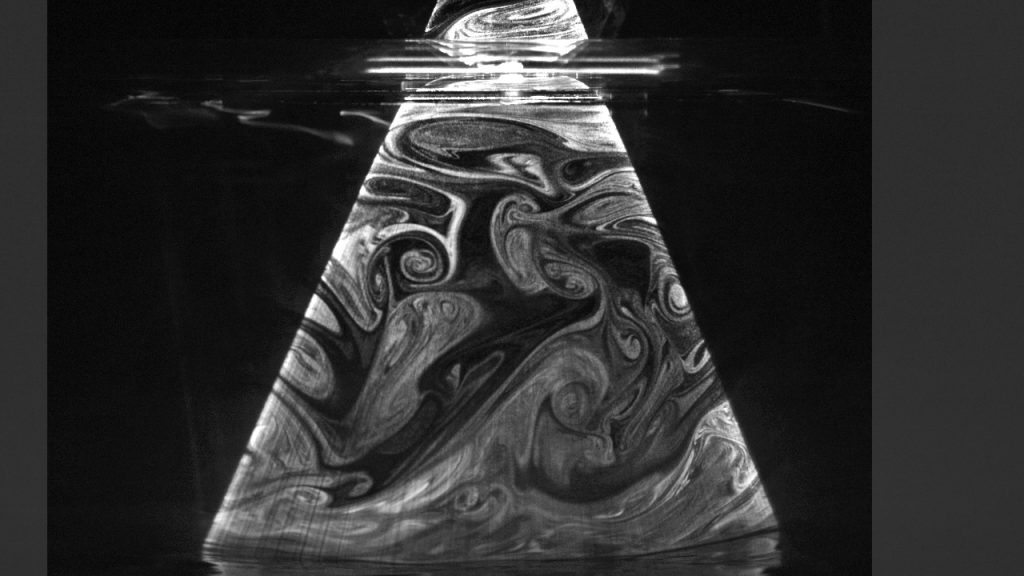Second Place Winner 2025
| Submitted by: | Khaled Mohamed |
| Department: | Civil + Environmental Engineering |
| Faculty: | Engineering |
Sewer odours have become a significant urban concern, notably affecting communities in Edmonton such as Steinhauer and Bonnie Doon. Our research addresses these challenges through sewer airflow modeling and experiments. This grayscale image illustrates intricate turbulent airflow patterns, clearly showing vortices and recirculation zones responsible for odour dispersion. This study represents one of the first successful attempts to capture intricate airflow features such as Kelvin-Helmholtz instabilities, and it introduces an innovative technique for accurately measuring low air velocities in sewer systems. This visualization not only deepens the understanding of airflow movement and odour transport in sewer systems but also informs more effective ventilation designs to mitigate odours and enhance urban environmental quality.
Was your image created using Generative AI?
No.
How was your image created?
The image was created using Particle Image Velocimetry (PIV), an advanced laser-based optical measurement technique. A thin laser sheet illuminated smoke structures that were generated at extremely low initial velocities to prevent disturbing the main airflow within a scaled sewer pipe model. A high-speed camera captured successive images of the particle motion, which were processed to generate detailed velocity vectors, profiles, and contours. The inner pipe surface was painted black to eliminate laser reflections and enhance image clarity. Post-processing and analysis of the experimental data were rigorously validated using Computational Fluid Dynamics (CFD) simulations in ANSYS Fluent, ensuring the reliability of the produced results.
Where is the image located?
Main Hydraulics Lab, NREF Building, University of Alberta, Edmonton.

